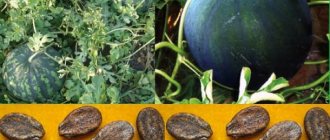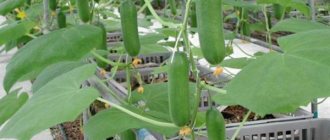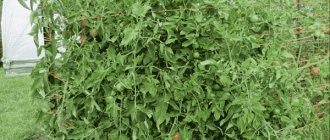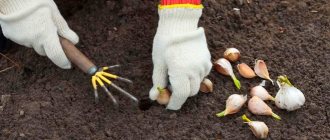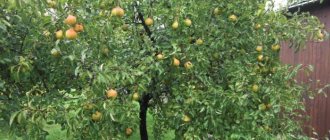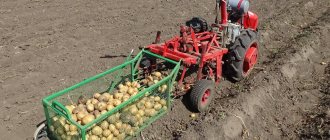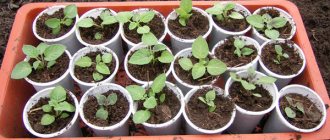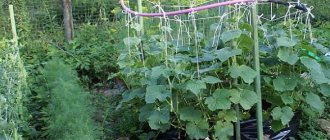Pros and cons of the upside down planting method
Of course, in order to resort to one or another method of planting and growing plants, you need to weigh all the pros and cons, what is more - minuses or pluses in this difficult experiment.
Pros:
- Tomatoes are much less susceptible to attacks by various types of underground pests, in particular such pests as mole crickets.
- There is now an opportunity every year to grow plants on the so-called “renewed” soil (as is known, this is an excellent prevention of fungal diseases and late blight).
A noticeable increase in the overall yield of plantings (this is facilitated by the fact that the soil and water in the buckets warm up much faster, therefore, the plant grows and strengthens at a rapid pace).- Reducing the time required for harvesting.
- Profitable use of fertilizers (compost and humus) in the preparation of earthen mixtures due to a significant reduction in their required volume.
- Tomatoes in containers such as buckets take up much less space, which makes life easier for gardeners and the opportunity to plant more crops, and the buckets can be moved as you please.
- Such harmful factors as weeds disappear.
- Fertilizers to increase fertility completely reach the roots.
- The threat of spreading infections is reduced.
- Tomatoes ripen in buckets two to three weeks earlier.
- When watering, water goes directly to the root system of plants, rather than spreading over the surface of the soil.
- Buckets can be placed under the roof or moved to other insulated rooms during periods of prolonged rainfall.
Reference. Growing tomatoes upside down is an extraordinary way to grow and decorate your own plot, and they do not require constant staking or any other special care.
This planting method also has disadvantages, namely:
- Increased labor intensity: you need to spend a lot of effort, patience and painstaking work for this method of growing tomatoes.
- Using a large number of buckets (containers) without a bottom.
- Not all varieties of tomatoes can be grown in buckets, but only hybrids and varieties with weak foliage and a dense root system (this includes many types of balcony tomatoes).
- The watering process must be done much more often than for tomatoes planted in open ground, because the roots in buckets do not have access to open ground.
- You need to pay special attention to watering, otherwise the tomatoes can easily die. They should be watered carefully, evenly distributing the amount of moisture supplied throughout the entire depth of the soil and at the same time, without over-flooding, since the tomatoes may perish due to lack of oxygen.
- You also need to pay attention to the temperature, but only if the buckets for growing were chosen in black, dark brown or dark green. To prevent the rhizomes from overheating in the heat, the buckets must be wrapped in light material, constantly shaded and sprayed with cold water.
Suitable varieties
You can plant any variety of tomatoes in a bucket, for example, you can try the following types.
The Miracle of the Earth variety belongs to the early-ripening, indeterminate group of tomatoes. The stem can stretch up to 170 cm. The bright pink fruits in buckets begin to ripen after 90 days. Weight can reach 500 g. The harvested crop can be stored for a long time and does not crack.
The bush of the Canadian giant variety can grow up to 150 cm, so it needs to be tied up. The red-orange fruits can weigh about 350 g and have a slightly flattened shape. The pulp is sweet with a pleasant sourness.
Argentine cream is characterized by a compact bush that does not exceed 40 cm in height and high yield. The shape of the tomatoes is oblong with a spout at the base. Weight is about 80 g. Tomatoes begin to turn red after 90 days.
The sorcerer is characterized by early fruit ripening, approximately 95 days. The stem extends up to 50 cm, the branches are medium-leafed. There are 5 fruits on each cluster, which become red when ripe. Weight approximately 150 g.
A gardener's dream is for determinate varieties. The height of the bush is only 65 cm. The fruits are round in shape and have a smooth, glossy, red surface. Average weight is 160 g.
The Shakhtarskaya Slava variety, planted in buckets, is distinguished by a powerful stem, large, sweet tomatoes, weighing about 250 g and early ripening. Fruiting is long lasting. Tomatoes are oval shaped and turn red when ripe. The fruit tastes juicy and sweet.
Preparation
Capacities
When preparing materials for planting tomatoes, you should first pay attention to:
- Bucket color. It is better if they are light in color, but if they are not, then dark buckets need to be wrapped in light (white) material so that their rhizomes do not overheat.
- The material from which the buckets are made is not important at all; they can be made of plastic or metal.
- Volume. Buckets must have a volume of at least 10 liters.
- Quality. The more worn out and used the bucket looks, the better. Numerous cracks, chips and holes improve the evaporation of excess water and ventilate the root system of tomatoes. When using new buckets, it is necessary to make a large number of breaks and holes in the bottom and along their edges.
Important! For the method of planting tomatoes upside down, you will need buckets with a hole diameter in the bottom of the container of about 5-10 centimeters.
Semyan
Tomato seeds must be thoroughly sorted to select the largest and most undamaged ones before sowing in buckets. It is possible to buy seeds in a special store or prepare them yourself in advance. For this purpose, it is necessary to leave several of the largest and most ripened tomatoes in the fall. Last year's seeds are best suited for growing seedlings.
When using purchased seeds, be sure to monitor the expiration date. Seedlings will sprout much better if the seeds have the shortest expiration date.
Self-prepared seeds must be thoroughly heated with a lamp and treated with a solution of potassium permanganate. Purchased seeds are most often already treated with such a special solution.
You can learn more about preparing tomato seeds for sowing here.
The rest of the material
In order to increase the yield of tomatoes, it is best to prepare special soil for tomatoes in advance before planting them.
- In the fall, you need to fill the buckets with humus. To create humus we will need:
- ordinary soil from the garden (it is best to take it from cucumber beds);
- ash.
- Then you need to mix the above components together and place them in buckets. It won’t be superfluous to add special substances so that processes in the soil occur more intensely.
The resulting mixture should be filled with water and left for the whole winter directly in buckets in the greenhouse.
- They can be arranged in any convenient way or dug into the ground to a depth of about 20 centimeters.
- You constantly need to add snow to the buckets so that the ground is completely saturated. When the snow melts in the spring, the soil will be thoroughly saturated with melt water.
- As for the soil, you can also pour expanded clay into buckets or cover it with small pieces of old planks so that there is always air access to the root system of the tomatoes. Next you need to start putting:
- the first layer in the form of hay, grass, food remains;
- the second layer is sand with the addition of two glasses of ash;
- the top layer is garden soil.
- It is necessary to water the soil with plenty of warm water. You can also use the process of slaking the lime, which will lead to its strong heating and pour boiling water on it. Such warming of the earth will allow seedlings to be planted and the harvest to be harvested much better and earlier in time.
- After several days, you need to plant two or three plants in one bucket with a volume of about ten liters.
Reference! You can fertilize with only one fertilizing with mineral fertilizer before the tomatoes begin to bloom. You can also resort to a type of fertilizer such as magnesium sulfate. It should be applied in early spring when the snow begins to melt or directly into the hole when planting, approximately one tablespoon per bucket of soil.
Growing seedlings
To grow seedlings, choose large seeds without black spots and mechanical damage. First, they are disinfected in a medium-pink solution of potassium permanganate for 15 minutes, then soaked in water for 1-2 days until they swell, wrapped in a cloth or gauze.
Sow the seeds in seedling boxes or pots to a depth of no more than 2 cm and place in a warm place until shoots emerge. As soon as the first shoots appear above the ground, the seedlings are moved to a well-lit place.
The best temperature for growing seedlings is 18-21°C during the day, 15-17°C at night. At higher temperatures, the stem may stretch.
Picking (transplanting) is carried out when the tomato has 2 true leaves. The stem is buried in the soil to the lower cotyledon leaves. Fertilizing is done on the 10th, 20th day after emergence and a week before planting in a permanent place. By the time of planting in a permanent place, the plant should have from 7 to 12 leaves.
How to grow upside down: step-by-step instructions
- To grow tomatoes in this way, it is best to use plastic buckets with a volume of about 20 liters with a handle.
- The bottom of the plastic bucket needs to be drilled to obtain a hole about 8 cm in diameter and placed on two supports to make it easier to reach the bottom.
- You need to lay special soil with fertilizers along the walls of the container. The lower part of the plant must be carefully pulled through the hole, and a stem of about 4-5 cm should be left outside. This way, the crop will be fixed.
- Then you need to gradually fill the bucket with soil, and the substrate should be thoroughly compacted, covering the root of the plant by about 5-6 cm.
- Next you need to add the next layer of compost.
- The bucket should be sprinkled with soil again so that the level of the substrate is several centimeters below the edges of the container.
- After this, the bucket must be hung in the place where it will be permanently located.
- You need to water the substrate so abundantly that water comes out of all the holes in the bottom of the bucket. If after watering the soil settles a little, then this is quite normal.
The bucket can be covered with a lid, but loosely to prevent excessive evaporation. The cover should be removed before watering.
Selection of containers
The container should not be too small
Containers of any shape are suitable for planting tomatoes, preferably with a volume of 10 liters or more. This area is sufficient for adequate nutrition of vegetable crops.
When choosing a container, preference should be given to a metal one, because... plastic does not tolerate temperature changes well and loses wear resistance after 1-2 seasons, and wooden tubs dry out and crack.
There is no need to specifically purchase new containers. You can use crumpled, broken, holey containers, containers without handles and with cracked enamel.
Several holes are made in the bottom of the selected container through which excess moisture will escape when watering.
Photo
Here you can see a photo of tomatoes upside down in buckets:
How to grow a tomato plant in an upside down bucket
Tomatoes upside down
This growing method was invented by gardeners from Europe. In our country, this technique has been simplified, but it has not become less effective.
Gardeners who have already used this method claim that its use has a positive effect on productivity and also helps to save usable space in a small summer cottage. A hanging container can be placed in a place not suitable for planting. In addition, tomatoes grown in buckets can serve as a decorative element in a summer cottage.
How to care for tomatoes?
- It is necessary to feed tomatoes several times throughout the season.
- The greenhouse should be well ventilated, but the temperature should not exceed 30 degrees Celsius.
- It is necessary to weed and thin out the plants in time to avoid thickening.
- It is necessary to carefully water to the very root of the tomatoes, without getting on the plant itself.
- Young tomato bushes should be watered into the bucket itself, and for stronger plants, fertilizer and water should be poured both into the bucket and under the bucket (if the buckets are dug in).
- Fertilizing should be done three times per season.
Rules for storing workpieces
Most pickles are almost immediately placed in the cellar or, in extreme cases, on the bottom shelf of the refrigerator, however, the latter solution can be considered appropriate only for a small number of preparations. The ideal storage temperature in both situations is considered to be +1...+6 °C. If there are no possibilities for long-term storage of salted tomatoes, then they can be preserved.
After five days of aging in brine, it is drained, and the fruits themselves and all the green seasonings used with them are washed with warm water. In this form, they are placed in clean jars, and the previously drained brine is brought to a boil. At the end of the procedure, the tomatoes placed in jars need to be filled with prepared brine and rolled up. Of course, the shelf life of rolled pickles will be much longer than the shelf life of vegetables in a bucket.
Common mistakes when landing upside down
- Care errors. Overheating of the soil in buckets may occur during too hot periods due to excessively rapid evaporation of moisture. And when growing, many gardeners make improper watering, which can lead to the death of tomatoes in buckets. Tomatoes in buckets need more frequent and regular watering than those grown in open ground.
- Excessive nitrogen fertilization. It is necessary to ensure that tomatoes receive magnesium on time. During magnesium starvation, feeding is carried out with magnesium sulfate (0.5%).
- Insufficient disease prevention. It is necessary, first of all, to prevent the occurrence of diseases in tomatoes, and not to treat plants for diseases. There is no need to wait for symptoms of damage and various injuries.
- Planting depth of tomato seeds. If seeds are planted in buckets too deep, they may not sprout at all.
When growing tomatoes in buckets, gardeners get excellent yields. Everyone has the right to decide to use traditional methods or innovative technologies.
If you are interested in other methods of growing tomato seedlings, then we suggest you learn about such methods as in bags, on two roots, without picking, in the Chinese way, in bottles, upside down, in pots, in peat pots and a barrel.
Useful tips
For beginners, even the simplest pickling process can be a difficult task, but over time, every housewife will notice some nuances that make it much easier.
The most common recommendations for preparing such preparations include the following:
- if you want the process of pickling tomatoes to go faster, you need to make a cross-shaped cut at the base of the fruit;
- for greater aroma of the preparation, it is advisable to pre-dry the dill and parsley, so that during the pickling process they will reveal their full aromatic potential;
- It is advisable to pickle the fruits of ripe and soft varieties of tomatoes in containers with a volume of no more than 50 liters, and hard or green tomatoes in wooden barrels;
- in order not to crush ripe fruits, they must be laid out in layers, each of which must be covered with leaves of cherries, horseradish, currants, basil, dill and other herbs;
- The optimal pickling time is 2 weeks, after which it is advisable to transfer the tomatoes to another clean container or roll them into jars for longer storage.
Interesting Facts
Also, to grow tomatoes in this way, you need to know the following information:
- The leakier the bucket, the better. This applies to those buckets that are buried in the soil. Thus, the roots of the tomato can penetrate through the holes into the soil and extract moisture.
- The high yield of tomatoes in buckets is also explained by the fact that the root system is close to the walls of the bucket, which warms up very quickly in the sun. And as you know, the yield of tomatoes directly depends on heat.
- Metal containers warm up faster and are also more durable and durable. Experienced gardeners advise using them for growing tomatoes.
We suggest you read: Spraying tomatoes with boric acid for good ovary
